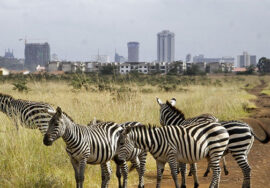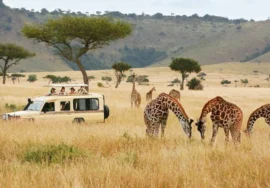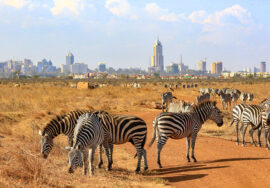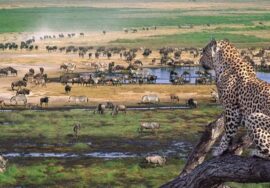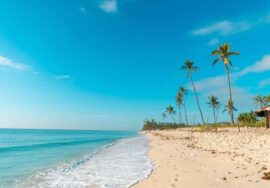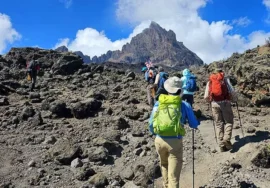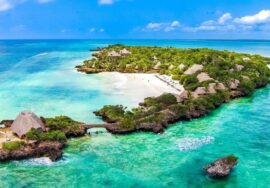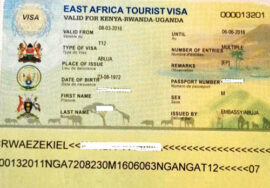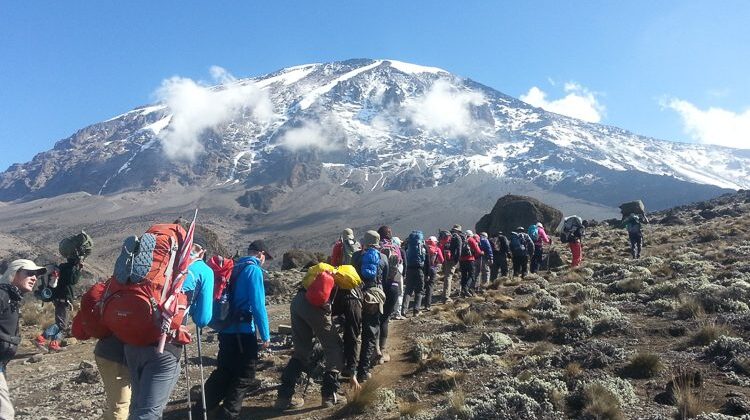
Mount Kilimanjaro Climbing Via the Famous Coca Cola Route
Mount Kilimanjaro Climbing Via the Famous Coca Cola Route, Why is it so popular? On Kilimanjaro, this is the only path that has sleeping huts along the way. Guests are given mattresses and blankets, and there are even simple bathrooms. There is also an eating room for everyone to use. On this path, you don’t need to sleep in a camp.
That may be why the Marangu is sometimes called the “Tourist Route” or even the “Coca-Cola Route,” since the huts sell the famous soft drink. Since there aren’t many steep hills along the Marangu, it’s known for being an easier route.
But because you are only on the mountain for a short time, you don’t have as much time to get used to the high altitudes. And that can sometimes make it less likely that you will reach the top.
People who take the Marangu will go up and down the same path, while people who take some other roads will see different views on the way down.
Mount Kilimanjaro Climbing Via the Famous Coca Cola Route
Day 1: Kilimanjaro Airport – Moshi
Arrive at Kilimanjaro Airport. An Safari Trips to Kenya driver will meet you there and take you to the Springlands hotel (or a similar hotel) in Moshi. After your trip, have dinner, rest, and get ready for your big journey.
Day 2: Moshi – Marangu Gate – Mandara Hut 2,740 m/9,000 ft
Your hotel serves a full breakfast to get you ready for the day’s climb. The hotel will pick you up and take you to Marangu gate. After your guide tells you how to get ready, you’ll begin your hike to Mandara, the first hut. The first part of your hike will take you through a beautiful jungle. When you get to Mandara, dinner will be served, and there will be lots of time to talk with other hikers about the first day.
Day 3: Mandara Hut – Horombo Hut 3,690 m/12,100 ft. (6 – 8 hours )
Today we’ll climb from Mandara Hut, which is 2,740 m/9,000 ft, to Horombo Hut, which is 3,690 m/12,100 ft. We’ll eat breakfast and then get ready. 11 km (6.8 mi) is how far it is. Today’s walk will take you from the rainforest to the moorland, where you can see some of the most unusual plants in the mountain, such as the 3 m/10 ft tall giant lobelia. The trip to Horumbo will take between 6 and 8 hours. When you get there, you’ll find a meal and hot water for cleaning. Congratulations, you’ve now hiked for two days.
Day 4: Mawenzi Hut (acclimatization ) 4,572 m/15,000 ft. (Approx. 4 hours)
Today we’re not going to hike uphill, but this break is a very important part of your climb. This is an acclimatization day because your body has a chance to get used to the higher temperature and thinner air. That doesn’t mean you shouldn’t go hiking, though. You should, in fact. As part of getting used to the altitude, take a four-hour walk to Mawenzi Hut and back. Don’t forget to drink a lot of water.
Your big push up to 4,572 m/15,000 feet tomorrow will happen tomorrow after dinner, while you prepare and rest.
Day 5: Kibo Hut 4,695 m/15,400 ft. (6 – 8 hours)
We’ll have breakfast and then go out into the high mountain forest. We are going to Kibo Hut today, which is our last stop before we reach the top of the mountain.
The “saddle” is the part of the mountain between Mawenzi and Kibo that we are going toward. Our last place to find water will be at 4,130 m/13,549 ft. There won’t be any water until we get back to Horombo Hut, so stock up now. At Kibo, you can buy water in bottles, though.
The 10-kilometer (6.2-mile) hike we’re going on today will take between 6 and 8 hours and end at Kibo Hut, a stone building in a sparse high-altitude desert. For tonight’s push to the top, we’ll eat dinner, get our stuff ready, and go to bed early.
Day 6: Uhuru Peak – summit to Africa’s highest peak 5,895 m/19,340 ft. (10 – 15 hours including descent to Kibo Hut & Horombo Hut)
What a great day! And the day will begin very early, around midnight. We’ll have a small snack and then walk on a path that can get very rocky and steep. This is going to be the hardest part of your climb, and you might have to really dig deep into yourself to find the strength to keep going. We’ll be careful and move slowly.
At this height, we will also have to walk on snow, which will make the journey harder. At 5,895 m/19,340 ft, Uhuru Peak is the highest point on the continent. You will get there in the end. Take a deep breath and enjoy the moment. You made it! You beat Kili and are now a member of a select group of explorers. Enjoy the moment and take lots of pictures.
Then we start to go down. It will take three hours to get back to Kibo Hut. We’ll take a break and then go faster on our way to Horombo Hut than we did on the way up. Now you’ll finally get to Horombo and take a well-earned break. All together, you’ve hiked for 10 to 15 hours today, covering about 11 miles (18 km).
Day 7: Horombo Hut- Mandara Hut – Marangu Gate -Moshi 890 m/2,920 ft at Moshi (5 – 7 hours)
After yesterday’s exciting event, you’ll probably be hungry, so enjoy your last breakfast on the mountain. We will keep going down, past our first hut, the Mandara, which seems like it was weeks ago, and then go down to the Marangu Gate, which is a drop from 3,690 m/12,100 ft to 890 m/2,920 ft at Moshi. It will take about 5 to 7 hours to walk the last 18 km/11 mi. You’ll sign the register and give information about your climb at Marangu Gate.
Gold awards will be given to those who made it to the top. Excellent work!
After dinner and some rest, we’ll go back to the Springlands Hotel or something similar.
Day 8: Fly back home or embark on a wildlife safari
Your Safari Trips to Kenya driver will pick you up and take you to the airport. If you’d rather, you can continue on one of our local trips to Serengeti, Ngorongoro, or other beautiful wildlife parks in Tanzania.
Kilimanjaro is no longer just a name for a mountain in Africa. It was an experience that you’ll never forget. You now know this mountain and will always remember it. Excellent work! You’re one of the few.

